Dear readers,
In my last post about permaculture I was telling you why and how I’ve decided to grow my own food at home.
I believe that access to fresh and healthy food might become a problem in the near future. We pollute and destroy our planet and slowly poison ourselves by eating pesticide sprayed foods. Many of us don’t really have a choice, because it’s just what we get in our local supermarkets. Organic produce can be quite pricey, so is not always an option for those with less financial resources.
My goal was to finally know exactly what I’m putting in my mouth, and to become as independent as possible from the large agro industry.
I don’t want to be a slave of that system anymore.
But growing plants in buckets as I was doing on my balcony, wasn’t going to be enough in order to achieve that goal. I had to think bigger.
The property on which I live is huge, and several fruits such as banana, plantain, coconuts and pineapple already grew naturally here. However, there was a lot of space that wasn’t being used to grow anything, and was just grass. Green lawns are such a waste of space in my opinion. Just think about all the food you could grow instead of just having empty space. It's like having a 5 bedroom apartment, and living by yourself!
Most people focus on ornamental plants in their garden, and do not know how beautiful fruit and vegetable plants can be. These also flower, but in addition to their pretty colors, they also happen to feed you! Look at the beautiful eggplant flower below.

Back to my garden… I asked my landlord if he would allow me to grow veggies on his lawn, and to my surprise, he was more than enthusiastic about it. This was great! Now I had a whole space the size of a basketball field to experiment with!
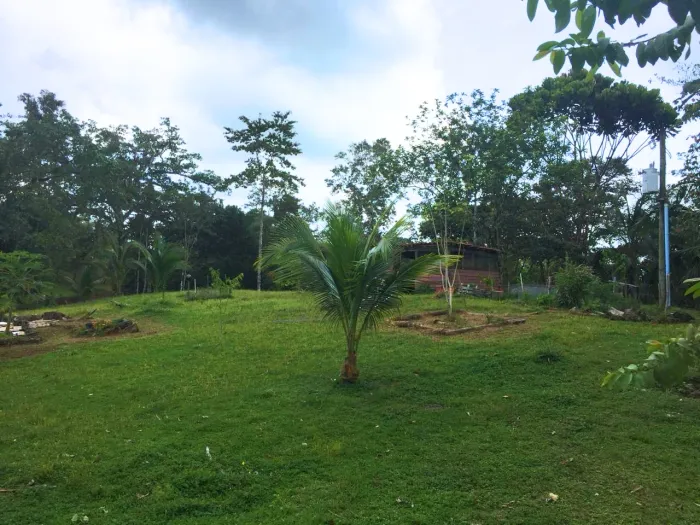
Here's the space I get to play around with
My goal is to eventually turn this entire space into a food forest, but I still have a long way to go.
Then came the time to decide which type of garden beds I was going to use, and which materials I was going to need to build it. Remember that permaculture principles are all about reusing waste to create something new that has value (also called upcycling), so my husband and I decided to use tree trunks that were lying around to form the edges of our beds.
We implemented no-dig beds using the lasagna method (see below).
- Since I was starting on a grass lawn, I had to suffocate the grass first. The way to do that is to put cardboard over it. The grass will be deprived of light and oxygen, and decompose (remember, cardboard is carbon), which will already start feeding your soil. My soil is extremely dense red clay, so I needed to really work on improving the quality of my soil before I could start growing anything.
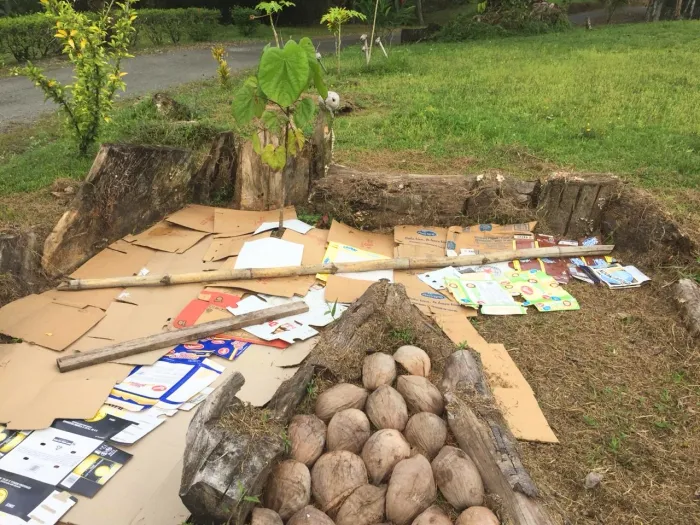
putting card board over grass to suffocate it
- The second layer is nitrogen (greens). My husband and I went to the local veggie stores here in Bocas del Toro, and asked them to give us anything they would normally throw away. One person’s waste is another person’s treasure, and to our amazement, we received huge bags full of “gold”.
Not only did I realize how much of that natural fertilizer would end up in landfills instead of compost bins, but also how much GOOD food was among the trash. I rescued more than 20 perfectly fine carrots, countless chayote and peppers from the bags. My husband and even I joked about making a “garbage salad” that evening.
Here we go, permaculture was already feeding us for free, even before even growing anything!
Unfortunately our society is still very ignorant when it comes to realizing how much we throw away, even if it could still feed entire families. Finding all this edible food was a huge eye opener for me.
If you don’t have access to a local veggie store, you can also use grass clippings, and anything green.
The 3rd layer will be a brown one (carbon) again, and we opted for wood chips. Bare in mind that all these layers will decompose to create compost, and give an initial nutrient boost to your soil. They will attract earthworms, and make the upper layer of your soil softer as a result. When you plant something new, it’s important that you do it in loose soil, as the fragile little roots will not be able to penetrate hard soil.
And finally, as the final layer of our lasagna, we got some black soil from locals who sell this here in Bocas. Permaculture principles would require you not to buy anything, but we needed to get at least some dark soil in order to jump-start our garden.
Here's a great instructional video about how to create a no-dig garden bed:
I wish I had documented our process more thoroughly, but this was way before I joined Steemit, so I didn’t really have an incentive to do so.
We created our 3 garden beds in a C shape, as it would allow us easy access in the middle and around the edges to control it better, and avoid stepping on the soil. Below you'll see a photo of the first finished garden bed.
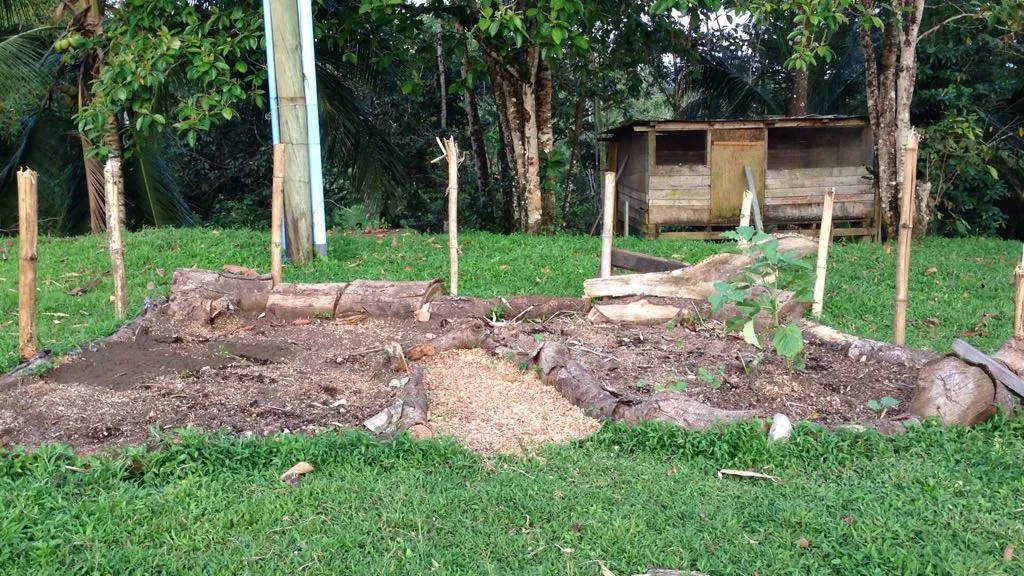
The first garden bed, we called it the magic bed, because we didn’t have to plant anything! Since we used the organic waste from all sorts of fruits and veggies, stuff just started growing on its own, and we followed the growth process with great curiosity. We didn’t know what was going to come out of it, and it was so much fun to see what we had as time passed by. Our “surprises” included tomatoes, papaya, watermelon, melon and cucumber.
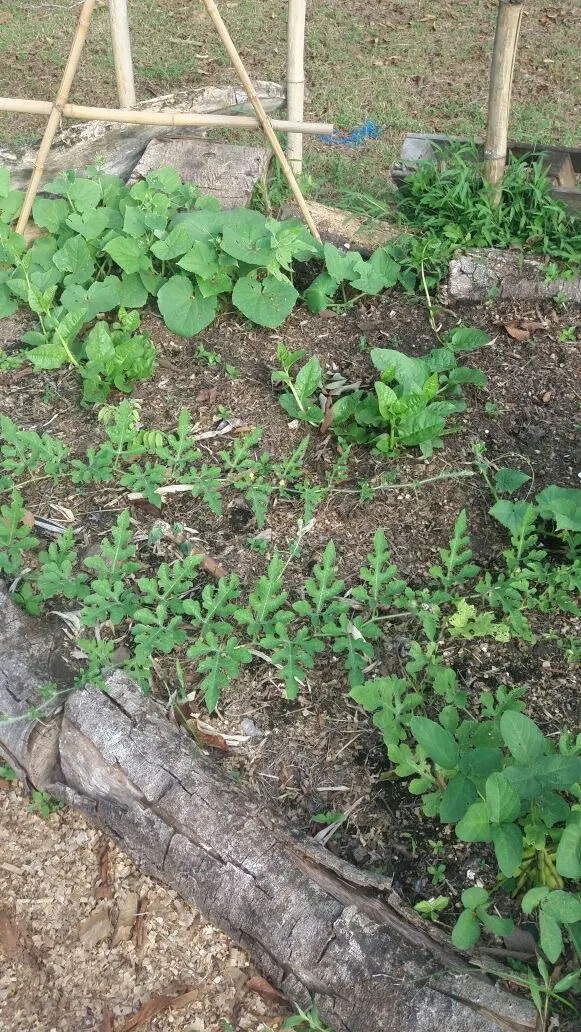
our magic bed with melon, water melon, spinach,
edamame and cucumber growing in it
The other beds were a little more planned, especially the largest one, where I wanted to grow pumpkin and squash, since they need a lot of space to grow.
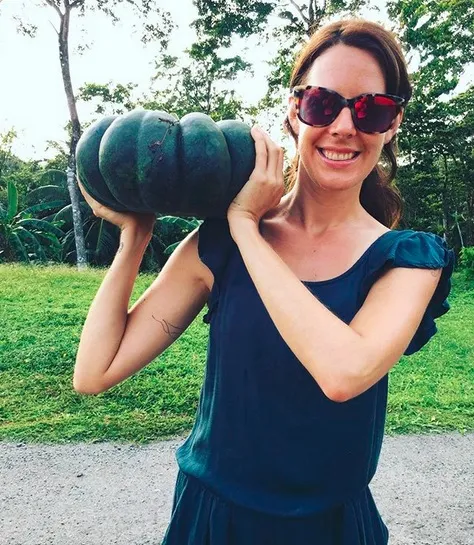
Here are some pictures of the first veggies and fruits that we harvested, and I will leave you guys here for now. I’m in the process of revamping my garden beds and plant new stuff, and I promise to properly document all the steps it this time around, including how I plant the seedlings and how I transfer them in the garden.
Stay tuned!
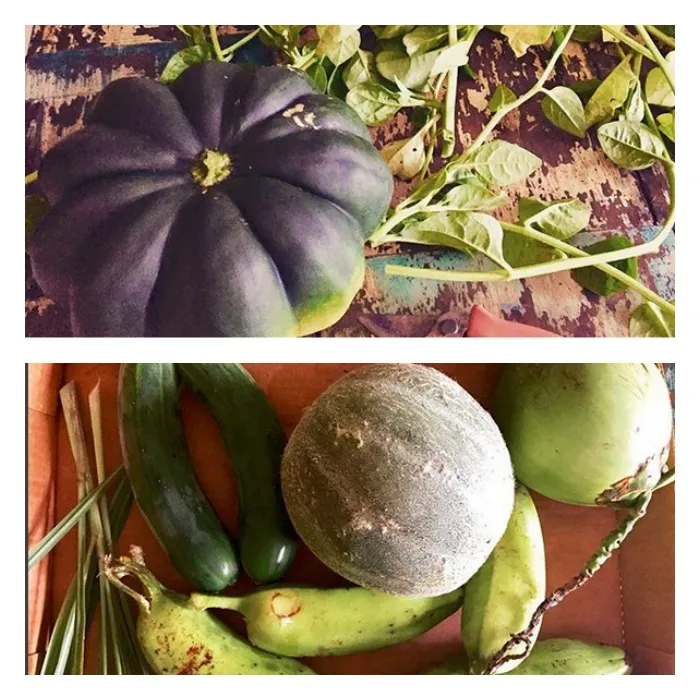
one of the pumpkins that started growing in the large bed
As usual, I look forward to your comments/advice and questions below =)


